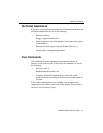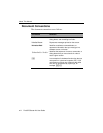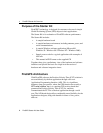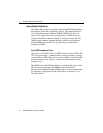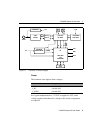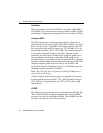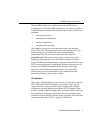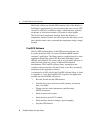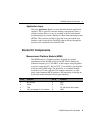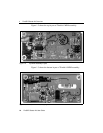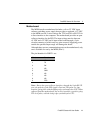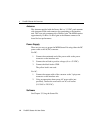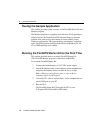
FirstGPS Starter Kit User Guide
7
FirstGPS Starter Kit Overview
1
The FirstGPS architecture is different from most GPS receiver
architectures. In all modern GPS architectures, the software resides in
a multitasking environment. The tasks perform a variety of functions,
including:
• tracking loop control
• measurement conditioning
• position computations
• navigation data decoding
The highest priority task is the signal-processing code (tracking
loops). This code, although it has a small code footprint, has a very
high interrupt rate (up to 2000 Hz) with a stringent latency
requirement. The rest of the tasks can loosely be grouped as
navigation code. These form a larger body of code, heavy with
floating-position operations, but with higher tolerance to latency.
In typical GPS board implementations, all tasks are hosted in the same
CPU even though they have significantly different characteristics. In
contrast, the FirstGPS architecture hosts the signal-processing
function on the IO and the navigation function on a host CPU,
allowing the processor characteristics to be optimized for each
function and reducing total system loading.
IO Interfaces
The outputs of the IO tracking loops are sent via serial link to the host
CPU, where the FirstGPS navigation code resides. There, the raw
outputs from IO are processed into range, Doppler, and orbit data
information, and then further processed into a PVT solution. These
results are made available through a fully featured FirstGPS API to the
host application. In the reverse direction, IO receives tracking loop
controls from the FirstGPS software via the serial link. The serial link
rate between IO and host CPU is typically 19200 baud.



